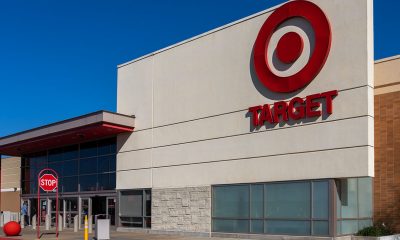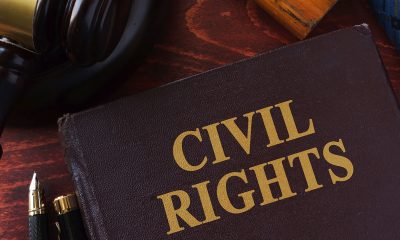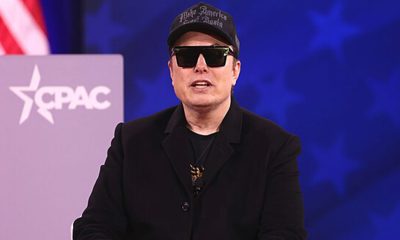#NNPA BlackPress
OP-ED: Why “green buildings” are a civil rights issue
NNPA NEWSWIRE — When we decided to establish our new headquarters as a living building and began to explore what it takes to do so, we saw the problem firsthand at meetings of green building organizations. We were struck by just how homogenous some of those spaces were in terms of race, with a significant dearth of people of color engaged in these discussions. We juxtaposed this against what we knew to be true: Communities of color and low-income communities are more likely to be in sick buildings, whether it’s mold, lead, asbestos, or radon. We are more likely to be in the least energy-efficient buildings, and that is reflected in the fact that we pay the highest proportion of our income for electricity. And we are more likely to be in the least disaster-resilient buildings, with homes in floodplains or without reinforcement.
By Jacqui Patterson and Mandy Lee, NAACP
Voting rights. Segregation. Criminal justice reform. For more than a century, the civil rights movement has taken on the inequities that divide and disfigure American society. Now the green building sector has joined the fronts of struggle for access and equity.
Why?
The green building sector is transforming the places in which we live, work, and gather. Sustainable buildings, defined by certification programs like LEED, promote the health and wellbeing of building occupants while minimizing climate change and pollution. For some people.
This wave of better building practices has yet to fully reach the people suffering the most from buildings that are unsafe, unhealthy, unaffordable, and unsustainable. African Americans and other people of color disproportionately feel the burden of unsustainable buildings: energy insecurity in their homes, health problems like asthma from poor indoor air quality, and damage from worsening disasters fueled by climate change. These are enduring legacies of discriminatory practices, disinvestment, and barriers to building wealth over the generations.
What’s worse, the sustainable building sector is an insider’s club with a serious diversity problem. Whether it’s as policy makers, advocates, architects, contractors, or even in the construction workforce, the most impacted communities are underrepresented in the design and construction of sustainable buildings. For example, according to the National Organization of Minority Architects, less than two percent of registered architects are African Americans, and less than 0.4% are African American women. Green building is a huge growth industry, but communities of color are not yet positioned to fully benefit from it.
When we decided to establish our new headquarters as a living building and began to explore what it takes to do so, we saw the problem firsthand at meetings of green building organizations. We were struck by just how homogenous some of those spaces were in terms of race, with a significant dearth of people of color engaged in these discussions. We juxtaposed this against what we knew to be true: Communities of color and low-income communities are more likely to be in sick buildings, whether it’s mold, lead, asbestos, or radon. We are more likely to be in the least energy-efficient buildings, and that is reflected in the fact that we pay the highest proportion of our income for electricity. And we are more likely to be in the least disaster-resilient buildings, with homes in floodplains or without reinforcement.
That’s why the NAACP recently launched the Centering Equity in the Sustainable Building Sector (CESBS) Initiative, pushing forward civil rights in this critical (if unexpected) new sphere. The NAACP will define and articulate an agenda for an equitable green building sector, using its Baltimore headquarters as a living laboratory for this concept. Through this effort, the NAACP will develop a replicable model for centering equity in all aspects of sustainable, healthy, safe, and regenerative buildings.
So, what would an equitable green building sector look like? It would advance community-wide transition, not just a few green buildings in isolation. Sustainability would be seen as a basic necessity – not a luxury item — in any building project. Low-income communities, communities of color, and women would be at the heart of a better building industry, supported by more inclusive education and professional development pathways. Sustainability investments would prioritize the most impacted communities. And underrepresented communities would be deeply engaged in planning and design, because “shaping the environment is best done by the people who live in it,” according to Professor Dale Glenwood Green of Morgan State University.
Some communities and organizations are getting it right and helping us imagine what is possible. For example, the Mental Health Center of Denver, Colorado planned to build a new, green campus in the predominantly African American and low-income Northeast Park Hill community. The Center sought input from neighbors to shape the design and function of the four-acre property. As a result, the Dahlia Campus for Health and Well-Being now offers a comprehensive array of services in addition to mental health care: a preschool that is inclusive of students regardless of ability; a pediatric dental clinic; an urban farm, teaching kitchen, and farmers’ market; and a variety of indoor and outdoor community spaces. The campus’ sustainability and equity approaches were verified through LEED Gold certification and a tool called the SEED Evaluator.
Another model is the Green Communities Criteria (GCC) program, a framework and certification developed by Enterprise Community Partners to bring the benefits of sustainable construction practices to low-income families and affordable housing. While this program is still in development, it has already produced 127,000 certified affordable homes through $3.9 billion in investment. Thanks to the leadership of standards like GCC, a total of 32 states have incentivized green building certification programs for affordable housing developments receiving support from the federal Low-Income Housing Tax Credit (LIHTC) program.
Fundamentally, sustainability without equity will merely sustain inequity. The civil rights movement has a critical role to play in creating a sustainable building sector that is both green and just – for the benefit of our families, our communities, the economy, and the planet.
This op-ed is adapted from two reports released today from the National Association for the Advancement of Colored People (NAACP) Centering Equity in the Sustainable Building Sector (CESBS) Initiative. Patterson is the Senior Director of the NAACP Environmental and Climate Justice Program; Lee is the program manager for the CESBS Initiative at the NAACP.
#NNPA BlackPress
Lawmakers Greenlight Reparations Study for Descendants of Enslaved Marylanders
BLACKPRESSUSA NEWSWIRE — Maryland lawmakers have approved Senate Bill 587, authorizing the creation of the Maryland Reparations Commission.

By Stacy M. Brown
BlackPressUSA.com Senior National Correspondent
Maryland lawmakers have approved Senate Bill 587, authorizing the creation of the Maryland Reparations Commission. The body will study and make recommendations for reparations to descendants of enslaved people and others harmed by centuries of discriminatory policies. The legislation now awaits the governor’s signature and is scheduled to take effect July 1, 2025. The commission will examine Maryland’s long history of slavery, the economic and social systems that benefited from it, and the lingering impacts of those institutions. Its work will include recommendations on financial compensation, housing and business support, tuition waivers, and other forms of restitution. “This commission is not only about acknowledging our past – it’s about using that understanding to pave the way for a more equitable and fair future,” said Del. Jheanelle Wilkins, Chair of the Legislative Black Caucus of Maryland, which made reparations a top priority for the first time this legislative session.
From its founding in 1634 until the abolition of slavery in 1864, Maryland was a society built on slave labor. Tobacco, the colony’s staple crop, fueled economic growth and political dominance for the state’s elite. By the mid-18th century, nearly one-third of Maryland’s population was enslaved. Skilled and unskilled laborers like Frederick Douglass, who caulked ships in Baltimore, contributed to the state’s prosperity under brutal conditions. The legacy of that bondage continued to echo across generations. Del. Aletheia McCaskill, the lead sponsor of the House version of the bill, said the measure lays the groundwork for redress. “I am overjoyed at the passage of this monumental legislation,” McCaskill said. “This commission will gather historical evidence, examine present-day disparities, and provide a data-driven framework to acknowledge past harms. By recommending policies and developing solutions to repair the damage done, we can take meaningful steps toward true equity in our state.”
Sen. C. Anthony Muse, sponsor of the Senate version, called the passage historic. “We took a historic step towards justice and healing for our communities,” Muse remarked. “The passage of Maryland Senate Bill 587 marks a significant commitment to addressing the long-lasting effects of slavery and systemic inequities.” The commission’s membership will include lawmakers, historians, HBCU scholars, civil rights experts, representatives from the NAACP and the Maryland Black Chamber of Commerce, and members of the public. It will examine reparations programs in other states and recommend procedures for verifying eligibility and the feasibility of funding and distributing reparations. Maryland’s history makes it a powerful setting for this initiative. The state witnessed the forced transport of nearly 100,000 Africans during the 18th century. The rise of tobacco plantations led to a devastating regime marked by family separation, disease, forced labor, and systemic brutality. Enslaved individuals in Maryland built canals, smelted iron, and helped fuel the economic engine of the state while living under constant threat of sale or violence. The stories of individuals like Hillery Kane at Sotterley Plantation and Lucy Jackson at Hampton Mansion reveal not only the cruelty of slavery but also the resilience and resistance of the enslaved.
By the 19th century, Maryland became a central player in the domestic slave trade, with an estimated 20,000 people sold to cotton plantations in the Deep South between 1830 and 1860. Even after emancipation in 1864, freed Black Marylanders faced decades of disenfranchisement, segregation, and economic exclusion. “This is about more than history,” Wilkins said. “It’s about how that history has shaped the realities of today.” The commission will submit a preliminary report by January 1, 2027, and a final report by November 1, 2027. It will explore possible sources of funding, such as businesses and institutions that benefited from slavery and discriminatory government practices.
Opposition to the bill has centered mainly on its cost, but the fiscal note details only a modest increase of $54,500 in 2026 to fund contractual staff. No reparations payments are authorized under the current bill. Maryland is joining California, Colorado, Illinois, Massachusetts, and New York in forming a reparations commission. The move comes as diversity, equity, and inclusion initiatives face increasing national scrutiny and political attacks. Still, supporters of the commission insist the time for reckoning is now. “We’re not just commemorating the past,” McCaskill said. “We are charting a course toward justice, informed by our truth and grounded in our responsibility to future generations.”
#NNPA BlackPress
Harris, Obama, and Booker Step Up as Resistance Against Trump Takes Shape
BLACKPRESSUSA NEWSWIRE — Obama, meanwhile, broke his silence during an appearance at Hamilton College in New York, offering one of his sharpest public critiques yet of Trump’s second administration.

By Stacy M. Brown
BlackPressUSA.com Senior National Correspondent
Is the resistance finally taking form?
As Kendrick Lamar asked during his powerful Super Bowl performance, “Are we really about to do it?” That question now echoes in the political arena as former President Barack Obama and former Vice President Kamala Harris have entered the public fray, joining voices like New Jersey Sen. Cory Booker and Texas Rep. Jasmine Crockett in confronting President Donald Trump and his administration’s sweeping changes head-on. After months of relative silence following her defeat to Trump last November, Harris returned to the spotlight Thursday during a rare appearance at the Leading Women Defined conference at a seaside resort in Dana Point, California. According to The Los Angeles Times, she didn’t mention Trump by name but spoke forcefully about the anxiety many Americans are experiencing under his new administration.
“There is a sense of fear that is taking hold in our country, and I understand it,” Harris said. “These are the things that we are witnessing each day in these last few months in our country, and it understandably creates a great sense of fear. Because, you know, there were many things that we knew would happen, many things.” “I’m not here to say, ‘I told you so,’” she continued. “I swore I wasn’t going to say that.” The appearance marked a shift in tone for Harris, who has been weighing a potential run for governor of California in 2026 or waiting until 2028 for another shot at the presidency. Still, she clarified that her political silence hasn’t equated to surrender. “We can’t go out there and do battle if we don’t take care of ourselves and each other,” Harris told the crowd. “I’ll see you out there. I’m not going anywhere.”
Obama, meanwhile, broke his silence during an appearance at Hamilton College in New York, offering one of his sharpest public critiques yet of Trump’s second administration. He condemned Trump’s attempts to reshape the federal government, stifle dissent, and punish those who oppose his policies. “So, this is the first time I’ve been speaking publicly for a while,” Obama said. “I’ve been watching for a little bit.” “Imagine if I had done any of this,” Obama added. “It’s unimaginable that the same parties that are silent now would have tolerated behavior like that from me or a whole bunch of my predecessors.” While calling Trump’s proposed tariffs bad for America, Obama said his larger concern lies with what he described as the White House’s alarming overreach.
“I’m more deeply concerned with a federal government that threatens universities if they don’t give up students who are exercising their right to free speech,” he said. “The idea that a White House can say to law firms, if you represent parties that we don’t like, we’re going to pull all our business or bar you from representing people effectively. That kind of behavior is contrary to the basic compact we have as Americans.” Obama, who campaigned for Harris during the final stretch of the 2024 election, had warned that a second Trump term would endanger the nation’s democratic norms. “Just because [Trump] acts goofy,” Obama said at the time, “doesn’t mean his presidency wouldn’t be dangerous.” With Trump’s second term underway, the voices of resistance are growing louder.
Sen. Cory Booker added fuel to the movement by making history on the Senate floor. He delivered a 25-hour, 5-minute filibuster that broke the record previously held by segregationist Sen. Strom Thurmond. Thurmond’s 1957 filibuster—lasting 24 hours and 18 minutes—was aimed at blocking the Civil Rights Act. Booker used his record-breaking speech to denounce what he called a deliberate dismantling of government at the hands of Trump, Elon Musk, and Congressional Republicans. “It always seemed wrong,” Booker said, referring to the Senate room still named after Thurmond. “It seemed wrong to me when I got here in 2013. It still seems wrong today.”
The New Jersey senator, a descendant of both enslaved people and slave owners, framed his marathon speech as a moral plea, reading letters from Americans affected by deep cuts and policy threats to Medicare, Medicaid, Social Security, and SNAP. “This is a moral moment,” Booker declared. “It’s not left or right; it’s right or wrong.” With Booker’s record-setting stand, Harris’s reemergence, and Obama’s warning shots, what once felt like fragmented frustration among Democrats may now be coalescing into something more deliberate: a resistance that is finally, visibly, on the move. “I’ll see you out there,” Harris said. “I’m not going anywhere.”
#NNPA BlackPress
Dr. King and the Reason He Protested on His Assassination Anniversary
BLACKPRESSUSA NEWSWIRE — King was in Memphis to support striking African-American sanitation workers upset over poor working conditions and low pay. At his death, King also organized the Poor People’s Campaign to address poverty and economic inequality.
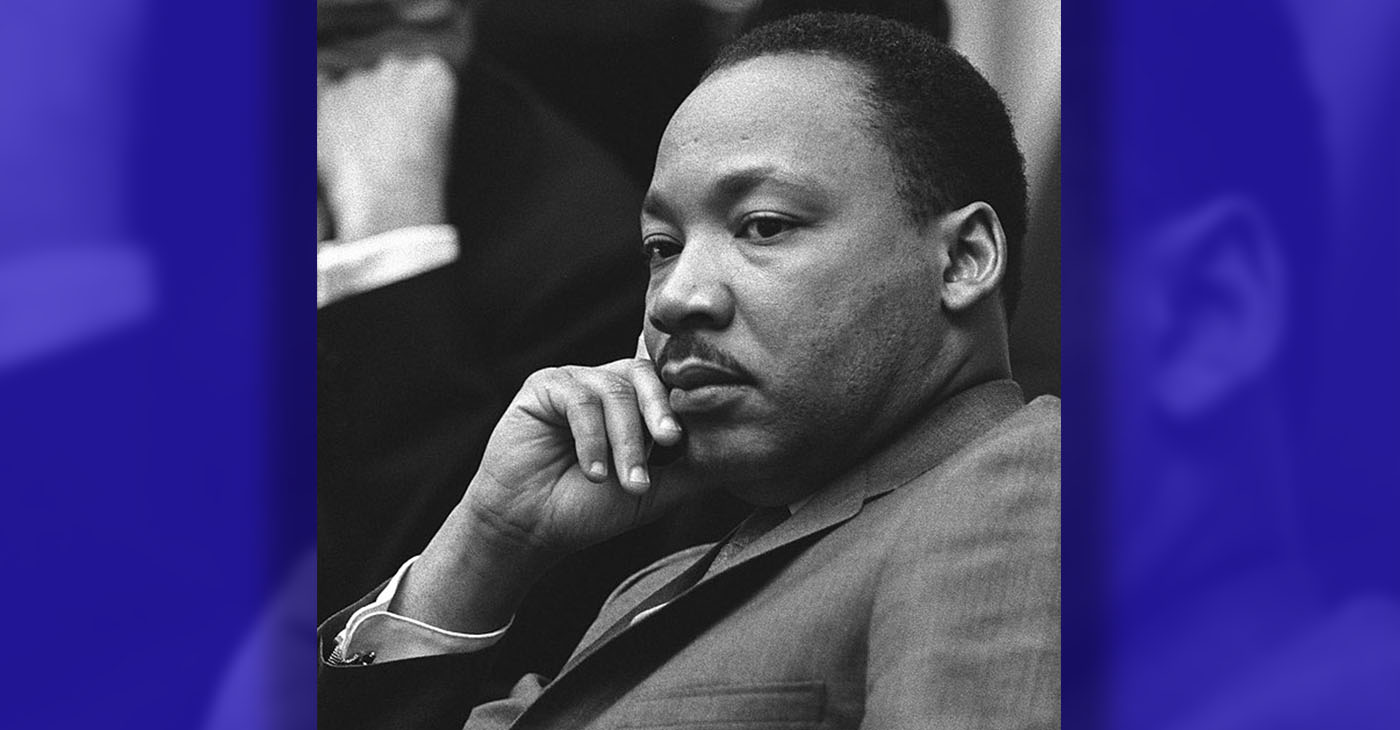
By April Ryan
The Media Panel at the National Action Network Convention in the NYC
“What would Martin do?” asked Mary Francis Berry, the former head of the U.S. Commission on Civil Rights. Berry was a college student when the news reports were delivered that Dr King was assassinated. More than half a century ago today, Dr. Martin Luther King Jr. was fatally shot on the balcony of the Lorraine Motel in Memphis, Tennessee. King was in Memphis to support striking African-American sanitation workers upset over poor working conditions and low pay. At his death, King also organized the Poor People’s Campaign to address poverty and economic inequality. Almost 60 years later, African Americans are withholding their dollars from companies like Target that have rolled back Diversity, Equity, and Inclusion programs. Target’s stock has dropped drastically, and it is reported that the company has lost billions of dollars from this action. On a related note, the National Urban League says that Black America’s buying power is close to $2 trillion. Major rallies around the nation, the majority of which are white-led, are protesting a new rollback in rights and freedoms created by the Trump agenda.
Thursday, in New York City, at the National Action Network convention during the media panel, the crowd in the packed ballroom stood to their feet, pumping their fists and shouting, “he’s a racist, “directing their ire at President Donald Trump. Freedom to protest in this country during difficult times is a blueprint Dr. Martin Luther King Jr. and his lieutenants left during the civil rights era. Berry remembers consulting with Dr. King’s widow, Coretta Scott King, and wondering what the civil rights icon would do whenever they started a protest like the “Free South Africa” movement and protests against the “unfair treatment of Haitians” and the “LGBTQ+ people and whatever.” The “checklist” of items to confirm this is what Dr. King would support is included in his book Where Do We Go From Here? The questions are: “Is it safe? Is it political? Is it popular? Is it right?” Protests and boycotts abound in this nation, and a significant protest is slated for this Saturday in Washington, D.C. 1000,000 people are expected to show up and protest against the MAGA and Project 2025 agenda Donald Trump follows. Berry reminds us that Dr. King supported peaceful protests and economic boycotts. At age 26, King led a nonviolent protest against segregated bus seating in Montgomery, Alabama, a pivotal event in the civil rights movement.
-

 Activism2 weeks ago
Activism2 weeks agoWe Fought on Opposite Sides of the Sheng Thao Recall. Here’s Why We’re Uniting Behind Barbara Lee for Oakland Mayor
-

 Activism4 weeks ago
Activism4 weeks agoOakland Post: Week of March 5 – 11, 2025
-

 #NNPA BlackPress2 weeks ago
#NNPA BlackPress2 weeks agoRev. Dr. Jamal Bryant’s Black Church Target Boycott Mobilizes 150,000
-

 Activism3 weeks ago
Activism3 weeks agoSan Francisco Is Investing Millions to Address Food Insecurity. Is Oakland Doing the Same?
-

 #NNPA BlackPress4 weeks ago
#NNPA BlackPress4 weeks agoFighting to Keep Blackness
-

 #NNPA BlackPress2 weeks ago
#NNPA BlackPress2 weeks agoRecently Approved Budget Plan Favors Wealthy, Slashes Aid to Low-Income Americans
-
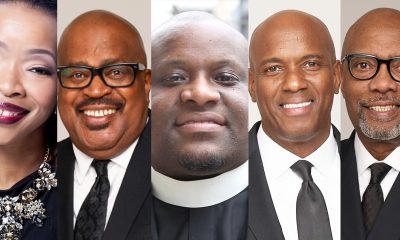
 Activism2 weeks ago
Activism2 weeks agoFaith Leaders Back Barbara Lee for Mayor, Criticize Candidate Loren Taylor for Dishonest Campaigning
-

 Activism3 weeks ago
Activism3 weeks agoOakland Post: Week of March 12 – 18, 2025



